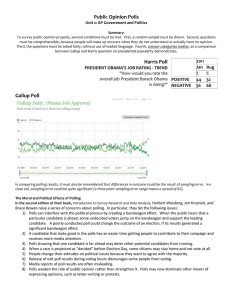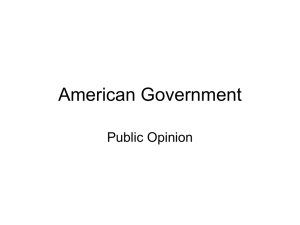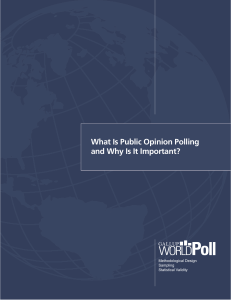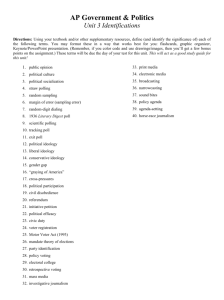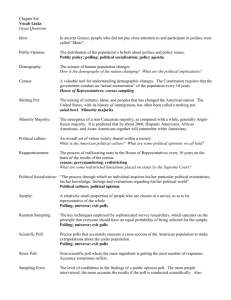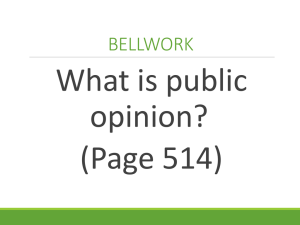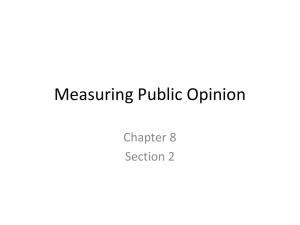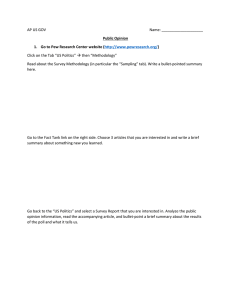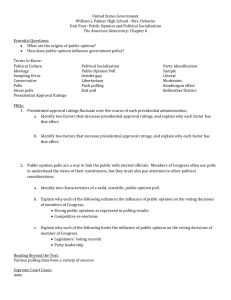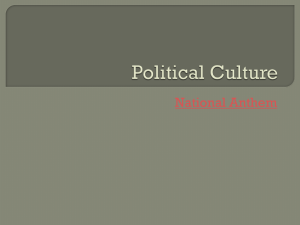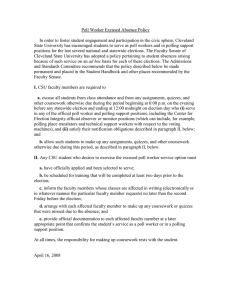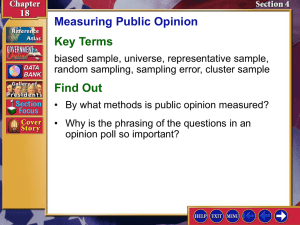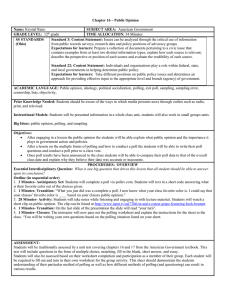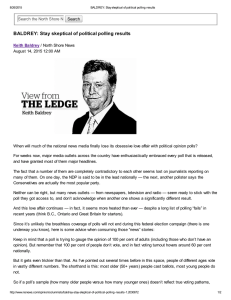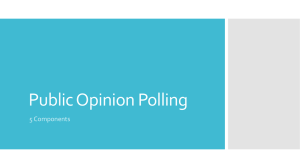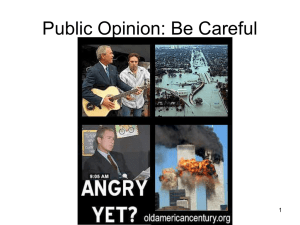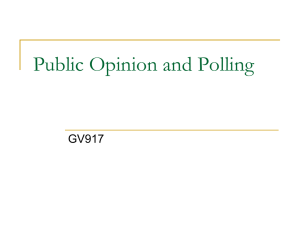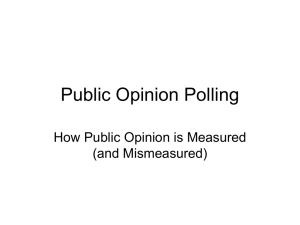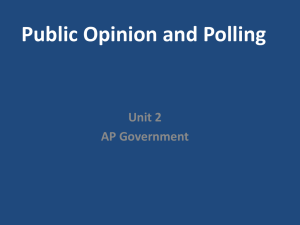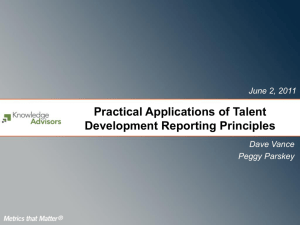Public Opinion Polling - Mr. Redilla's Wikispace
advertisement
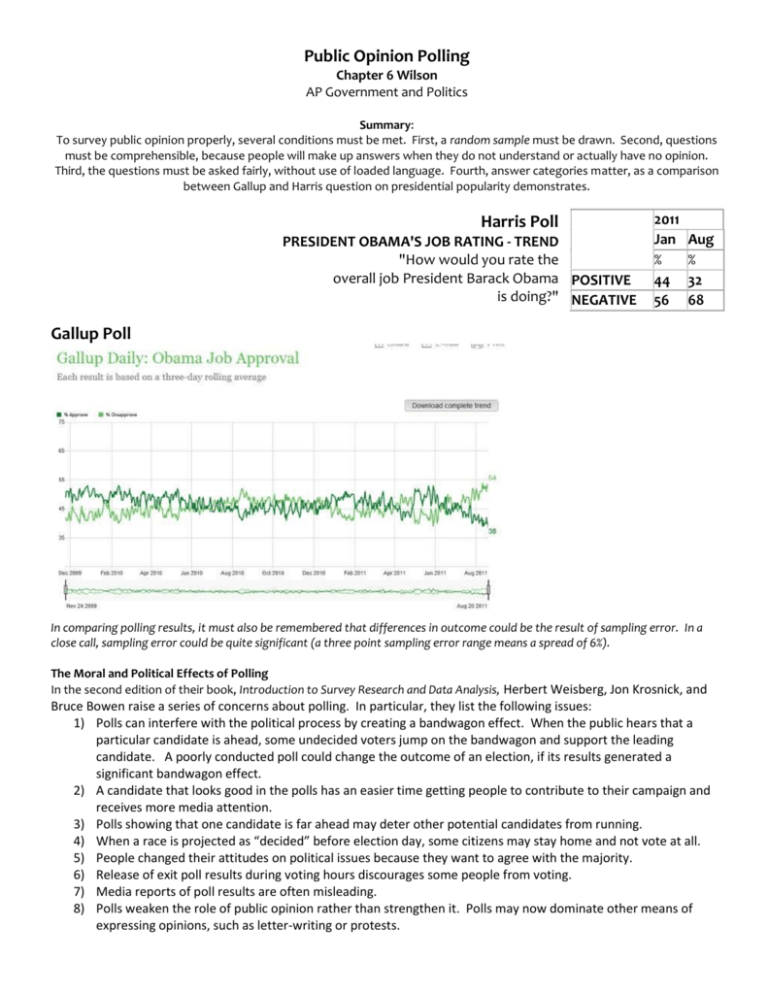
Public Opinion Polling Chapter 6 Wilson AP Government and Politics Summary: To survey public opinion properly, several conditions must be met. First, a random sample must be drawn. Second, questions must be comprehensible, because people will make up answers when they do not understand or actually have no opinion. Third, the questions must be asked fairly, without use of loaded language. Fourth, answer categories matter, as a comparison between Gallup and Harris question on presidential popularity demonstrates. Harris Poll PRESIDENT OBAMA'S JOB RATING - TREND "How would you rate the overall job President Barack Obama POSITIVE is doing?" NEGATIVE 2011 Jan % 44 56 Aug % 32 68 Gallup Poll In comparing polling results, it must also be remembered that differences in outcome could be the result of sampling error. In a close call, sampling error could be quite significant (a three point sampling error range means a spread of 6%). The Moral and Political Effects of Polling In the second edition of their book, Introduction to Survey Research and Data Analysis, Herbert Weisberg, Jon Krosnick, and Bruce Bowen raise a series of concerns about polling. In particular, they list the following issues: 1) Polls can interfere with the political process by creating a bandwagon effect. When the public hears that a particular candidate is ahead, some undecided voters jump on the bandwagon and support the leading candidate. A poorly conducted poll could change the outcome of an election, if its results generated a significant bandwagon effect. 2) A candidate that looks good in the polls has an easier time getting people to contribute to their campaign and receives more media attention. 3) Polls showing that one candidate is far ahead may deter other potential candidates from running. 4) When a race is projected as “decided” before election day, some citizens may stay home and not vote at all. 5) People changed their attitudes on political issues because they want to agree with the majority. 6) Release of exit poll results during voting hours discourages some people from voting. 7) Media reports of poll results are often misleading. 8) Polls weaken the role of public opinion rather than strengthen it. Polls may now dominate other means of expressing opinions, such as letter-writing or protests. Discussion Questions: 1) All of the items listed are related to fears that polling may manipulate electoral outcomes, even when they provide incomplete or inaccurate information. Which of these problems above do you consider the greatest danger? Why? 2) Given the limitations of public opinion polling, discuss the concerns of the following three “poll consumers”: a. Elected officials - b. Journalists - c. Voters - 3) Access the AP Government website at redilla.wikispaces.com. Using the 4 polling websites provided, complete the following: a. On 1 of the sites: Find a poll related to the 2012 election or a current issue. Make sure it is one that may provide you with the opportunity to analyze and/or draw conclusions. b. What information does the poll provide? c. Visit the other sites, and find either the same question/issue or a similar one. In the space below, determine the extent to which the different polling organizations have reached similar conclusions on similar issues. d. What conclusions can you draw from the polls you have analyzed? 4) To what extent should public officials heed the opinions of the public in the case of your poll?

